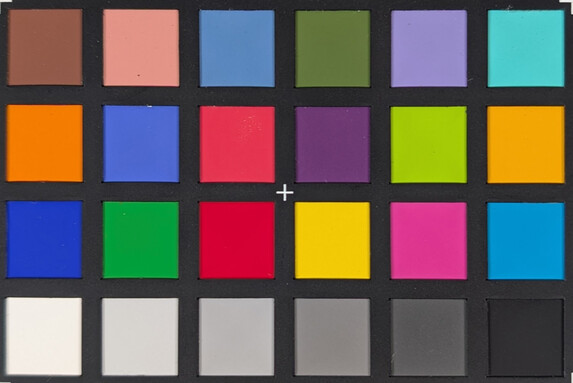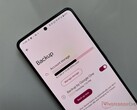
Google Pixel 9 Pro XL review - Top smartphone with more of a high-end feeling, also in terms of price
With an XL price tag.
Google has tweaked the Pixel 9 Pro XL in the usual ways to bring it up to date with the latest technology. This includes a full seven years of updates and a great camera setup. The prices have once again risen sharply, but our review will reveal whether this is justified.Daniel Schmidt, 👁 Daniel Schmidt (translated by Daisy Dickson) Published 🇩🇪 🇫🇷 ...
Verdict - Powerful smartphone with few weaknesses
Though the Google Pixel 9 Pro XL may be less XL than its name suggests, it nevertheless delivers a great total package that doesn't require many compromises to be made. Its cameras in particular feature impressive depiction quality and are very flexible—from macro to ultra-wide angle and zoom. Its display is super bright and yet accurate. All modern communication standards are also on board, including NFC, UWB, 5G-Sub6 and Wi-Fi 7. The Pixel 9 Pro XL is rounded off with seven years of updates.
A minor drawback is its comparatively slow SoC—plus, Google continues to rely on the older and significantly slower UFS 3.1 storage. We no longer consider the 128 GB version to be appropriate for a high-end smartphone in 2024 and it keeps the entry-level price artificially low. The display also runs with a low PWM frequency. Although the Pixel 9 Pro XL's video recording capabilities are very good, HDR and action image stabilization are only available if the resolution and/or frame rate are reduced.
Pros
Cons
Price and availability
You can order the Google Pixel 9 Pro XL from Amazon for $1,099.
Possible alternatives compared
Rating | Date | Model | Weight | Drive | Size |
|---|---|---|---|---|---|
| Google Pixel 9 Pro XL Google Tensor G4 ⎘ ARM Mali-G715 MP7 ⎘ 16 GB Memory, 256 GB | 221 g | 256 GB UFS 3.1 Flash | 6.80" 2992x1344 482 PPI OLED | ||
| Samsung Galaxy S24 Ultra Qualcomm Snapdragon 8 Gen 3 for Galaxy ⎘ Qualcomm Adreno 750 ⎘ 12 GB Memory, 256 GB | 232 g | 256 GB UFS 4.0 Flash | 6.80" 3120x1440 505 PPI Dynamic AMOLED 2X | ||
| Apple iPhone 16 Pro Max Apple A18 Pro ⎘ Apple A18 Pro GPU ⎘ 8 GB Memory, 256 GB NVMe | 227 g | 256 GB NVMe | 6.90" 2868x1320 458 PPI Super Retina XDR OLED | ||
| Xiaomi 14 Ultra Qualcomm Snapdragon 8 Gen 3 ⎘ Qualcomm Adreno 750 ⎘ 16 GB Memory, 512 GB | 219.8 g | 512 GB UFS 4.0 Flash | 6.73" 3200x1440 521 PPI AMOLED |
Table of Contents
- Verdict - Powerful smartphone with few weaknesses
- Specifications
- Case and connectivity - The Pixel 9 Pro XL with Gorilla Glas Victus 2
- Communication and software - The Pixel 9 Pro XL still comes with Android 14
- Sustainability - The Pixel 9 Pro uses recycled aluminum
- Cameras - Powerful quartet in the Pixel 9 Pro XL
- Display - Super-bright OLED with a low PWM frequency
- Performance, emissions and battery life - The Tensor G4 is slower than the competition
- Notebookcheck total rating
Specifications
Case and connectivity - The Pixel 9 Pro XL with Gorilla Glas Victus 2
What its name suggests is contradicted by its figures: the Pixel 9 Pro XL is not a larger Pro version, but strictly speaking the actual successor to the Pixel 8 Pro. In terms of size, the Google Pixel 9 Pro is therefore a Pixel 9 with the upscaled features of the Pro.
The Pixel 9 Pro XL's build quality is excellent. The front and back are adorned with Corning Gorilla Glass Victus 2, with a matte finish on the back. However, fingerprints are still clearly visible on our black version. The glass is surrounded by a polished stainless steel frame. The gaps are tight and even, and the smartphone hardly makes a sound when twisted. Despite its powerful camera module, the Pixel 9 Pro XL is not top-heavy. It is also dust and waterproof in accordance with IP68.
Fundamentally, its features haven't changed. The Pixel features Bluetooth 5.3, NFC and UWB—and an infrared thermometer is also installed again, which can measure the surface temperature of objects at short distances.
The physical interface installed is USB 3.2 (Gen. 1), which also supports wired image output and can mirror the displayed content. However, this only worked with poor scaling during our test. Its energy output via USB wasn't enough to power our obligatory external Samsung 980 Pro for the copying test, so we resorted to a more frugal Samsung PSSD T7. Here, the Pixel smartphone achieved a transfer speed of 209.41 MB/s. Connected data carriers can be formatted with FAT32 and exFAT.
Communication and software - The Pixel 9 Pro XL still comes with Android 14
The Google Pixel 9 Pro XL still comes delivered with Android 14 and is set to receive updates for seven years. Aside from exclusive Pixel features, users can also access plenty of AI functions, all of which you can read about in our review of the Pixel 9.
The phone supports a wide range of frequencies for accessing the internet on the go, so the Google smartphone should be able to establish a connection in every part of the world. With Wi-Fi 7, the device supports modern WLAN including the 6-GHz band. In combination with our reference router, the Asus ROG Rapture GT-AXE11000 (Wi-Fi 6E), we measured high and stable data rates.
The Pixel 9 Pro XL can accommodate one nano SIM card, which can be supplemented with an eSIM. Alternatively, you can use two eSIMs. VoLTE and Wi-Fi calls are supported. The phone's call quality is very natural, but the ambient noise suppression reaches its limits in loud street noise.
The Pixel 9 Pro XL's capacitive touchscreen responds to inputs quickly and precisely, with the linear vibration motor providing crisp haptic feedback if required. Biometric security is provided by an ultrasonic fingerprint sensor, which quickly and reliably recognizes the stored print. Alternatively or additionally, it is possible to set up less secure facial recognition via the front camera, although this regularly reaches its limits in the dark.
| Networking | |
| Google Pixel 9 Pro XL | |
| iperf3 transmit AXE11000 | |
| iperf3 receive AXE11000 | |
| iperf3 transmit AXE11000 6GHz | |
| iperf3 receive AXE11000 6GHz | |
| Samsung Galaxy S24 Ultra | |
| iperf3 transmit AXE11000 | |
| iperf3 receive AXE11000 | |
| iperf3 transmit AXE11000 6GHz | |
| iperf3 receive AXE11000 6GHz | |
| Apple iPhone 16 Pro Max | |
| iperf3 transmit AXE11000 | |
| iperf3 receive AXE11000 | |
| iperf3 transmit AXE11000 6GHz | |
| iperf3 receive AXE11000 6GHz | |
| Xiaomi 14 Ultra | |
| iperf3 transmit AXE11000 | |
| iperf3 receive AXE11000 | |
| iperf3 transmit AXE11000 6GHz | |
| iperf3 receive AXE11000 6GHz | |
Sustainability - The Pixel 9 Pro uses recycled aluminum
The Google Pixel 9 Pro XL comes delivered in a plastic-free box and there is no other plastic in its packaging. The smartphone itself uses recycled aluminum and consists of 18% recycled materials. Google has provided a complete sustainability report here.
Cameras - Powerful quartet in the Pixel 9 Pro XL
The camera setup on the back irons out the biggest point of critique of the Pixel 9 and also features a periscope zoom, which allows a five-fold optical magnification and can digitally magnify up to 30 times. We really like its images, and the other two lenses are identical to those of the Pixel 9.
On the front, Google has given the Pixel 9 Pro XL more megapixels—it now has 42 MPix, including autofocus. Pixel binning combines four pixels into one super pixel, which is why the finished images are 10 MPix in size. These have a warm white balance while appearing very harmonious and detailed.
Videos also look great on the Pixel smartphone. On the front, you can record in 4k/60fps at best, but its stabilization could do with some improvement and HDR recordings are limited to 30fps. The main camera goes one step further and allows 4k/60fps recording with HDR or 8k/30fps without HDR. It is a shame that the strongest image stabilization is only possible in Full HD at 30fps (without video optimization, with HDR).
Image comparison
Choose a scene and navigate within the first image. One click changes the position on touchscreens. One click on the zoomed-in image opens the original in a new window. The first image shows the scaled photograph of the test device.
Main cameraMain cameraUltra-wide angle5x zoomLow light

Display - Super-bright OLED with a low PWM frequency
The Google Pixel 9 Pro XL's 6.8-inch OLED display can dynamically adjust its refresh rate between 1 and 120 Hz and offers a high pixel density for a crisp display.
The panel's brightness is already very high when showing a pure white display and becomes even higher when the white area is reduced (APL18: 2,944 cd/m²). We measured 2,875 cd/m² when playing back an HDR video.
Although the OLED flickering is at a very constant and even level, its frequency of 240 Hz is low, meaning sensitive people may experience some discomfort.
| |||||||||||||||||||||||||
Brightness Distribution: 86 %
Center on Battery: 2148 cd/m²
Contrast: ∞:1 (Black: 0 cd/m²)
ΔE Color 0.5 | 0.5-29.43 Ø4.83
ΔE Greyscale 0.8 | 0.09-98 Ø5.1
99% sRGB (Calman 2D)
Gamma: 2.23
| Google Pixel 9 Pro XL OLED, 2992x1344, 6.8" | Samsung Galaxy S24 Ultra Dynamic AMOLED 2X, 3120x1440, 6.8" | Apple iPhone 16 Pro Max Super Retina XDR OLED, 2868x1320, 6.9" | Xiaomi 14 Ultra AMOLED, 3200x1440, 6.7" | |
|---|---|---|---|---|
| Response Times | -42% | 3% | 4% | |
| Response Time Grey 50% / Grey 80% * | 3.08 ? | 3.8 ? -23% | 1.78 ? 42% | 1.55 ? 50% |
| Response Time Black / White * | 0.88 ? | 1.41 ? -60% | 1.03 ? -17% | 1.26 ? -43% |
| PWM Frequency | 240 | 480 | 240 | 120 |
| PWM Amplitude * | 22.9 | 26.44 -15% | ||
| Screen | -192% | -119% | -96% | |
| Brightness middle | 2148 | 1317 -39% | 1055 -51% | 997 -54% |
| Brightness | 2050 | 1365 -33% | 1061 -48% | 1002 -51% |
| Brightness Distribution | 86 | 94 9% | 93 8% | 96 12% |
| Black Level * | ||||
| Colorchecker dE 2000 * | 0.5 | 3.4 -580% | 1.5 -200% | 1.6 -220% |
| Colorchecker dE 2000 max. * | 1.4 | 5 -257% | 4.7 -236% | 3.3 -136% |
| Greyscale dE 2000 * | 0.8 | 2.8 -250% | 2.3 -188% | 1.8 -125% |
| Gamma | 2.23 99% | 2 110% | 2.21 100% | 2.19 100% |
| CCT | 6582 99% | 6458 101% | 6625 98% | 6493 100% |
| Total Average (Program / Settings) | -117% /
-154% | -58% /
-78% | -46% /
-71% |
* ... smaller is better
Display Response Times
| ↔ Response Time Black to White | ||
|---|---|---|
| 0.88 ms ... rise ↗ and fall ↘ combined | ↗ 0.4135 ms rise | |
| ↘ 0.466 ms fall | ||
| The screen shows very fast response rates in our tests and should be very well suited for fast-paced gaming. In comparison, all tested devices range from 0.1 (minimum) to 240 (maximum) ms. » 2 % of all devices are better. This means that the measured response time is better than the average of all tested devices (20.5 ms). | ||
| ↔ Response Time 50% Grey to 80% Grey | ||
| 3.08 ms ... rise ↗ and fall ↘ combined | ↗ 1.544 ms rise | |
| ↘ 1.538 ms fall | ||
| The screen shows very fast response rates in our tests and should be very well suited for fast-paced gaming. In comparison, all tested devices range from 0.165 (minimum) to 636 (maximum) ms. » 11 % of all devices are better. This means that the measured response time is better than the average of all tested devices (32.1 ms). | ||
Screen Flickering / PWM (Pulse-Width Modulation)
| Screen flickering / PWM detected | 240 Hz Amplitude: 22.9 % | ||
The display backlight flickers at 240 Hz (worst case, e.g., utilizing PWM) . The frequency of 240 Hz is relatively low, so sensitive users will likely notice flickering and experience eyestrain at the stated brightness setting and below. In comparison: 53 % of all tested devices do not use PWM to dim the display. If PWM was detected, an average of 8350 (minimum: 5 - maximum: 343500) Hz was measured. | |||
Measurement series with fixed zoom level and different brightness settings (The amplitude curve at minimum brightness looks flat, but this is due to the scaling. The info box shows the enlarged version of the amplitude at minimum brightness).
Performance, emissions and battery life - The Tensor G4 is slower than the competition
The Pixel 9 Pro XL is powered by the Google Tensor G4, which is supported by 16 GB of RAM. This allows for smooth system performance, but even a two-year-old Snapdragon 8 Gen 2 offers more CPU power. For a smartphone with such a long update supply, we would have liked to see more performance. The integrated Mali-G715 MP7 graphics unit also doesn't support hardware-based ray tracing.
The Pixel 9 Pro XL's surface temperatures remained harmless at all times, but the SoC was throttled significantly in the 3DMark stress test, as well as in the now comparatively easy Wild Life stress test.
The Google smartphone's two speakers are able to produce a nice soundscape and a decent range of codecs is provided via Bluetooth. However, the Pixel does not yet support Auracast.
Its runtimes proved to be impressive, reaching over 16.5 hours during our Wi-Fi test at an adjusted display brightness (150 cd/m²). The Pixel 9 Pro XL can be charged with a power adapter (USB PD) that delivers at least 7.5 watts, with a maximum of 37 watts being supported. During our test, one full charge with a Motorola power supply (125 watts, USB PD 3.0) took exactly one and a half hours. The 50% mark was reached after 27 minutes and 80% after 44 minutes.
| PCMark for Android - Work 3.0 | |
| Samsung Galaxy S24 Ultra | |
| Xiaomi 14 Ultra | |
| Average of class Smartphone (4507 - 27169, n=192, last 2 years) | |
| Google Pixel 9 Pro XL | |
| Average Google Tensor G4 (11398 - 13948, n=5) | |
| Geekbench AI | |
| Single Precision TensorFlow NNAPI 1.1 | |
| Average of class Smartphone (122 - 4122, n=41, last 2 years) | |
| Average Google Tensor G4 (376 - 771, n=4) | |
| Google Pixel 9 Pro XL | |
| Half Precision TensorFlow NNAPI 1.1 | |
| Google Pixel 9 Pro XL | |
| Average Google Tensor G4 (4176 - 4754, n=4) | |
| Average of class Smartphone (122 - 32120, n=41, last 2 years) | |
| Quantized TensorFlow NNAPI 1.1 | |
| Average Google Tensor G4 (6269 - 6451, n=4) | |
| Google Pixel 9 Pro XL | |
| Average of class Smartphone (118 - 44381, n=41, last 2 years) | |
| Google Pixel 9 Pro XL | Samsung Galaxy S24 Ultra | Xiaomi 14 Ultra | Honor Magic6 Pro | Average 256 GB UFS 3.1 Flash | Average of class Smartphone | |
|---|---|---|---|---|---|---|
| AndroBench 3-5 | 33% | 78% | 101% | -12% | 8% | |
| Sequential Read 256KB | 1850.5 | 3610.25 95% | 4102.56 122% | 3923.31 112% | 1729 ? -7% | 2144 ? 16% |
| Sequential Write 256KB | 1280.56 | 1893.63 48% | 3095.36 142% | 3678.35 187% | 1156 ? -10% | 1737 ? 36% |
| Random Read 4KB | 310.88 | 437.12 41% | 362.88 17% | 415.68 34% | 285 ? -8% | 293 ? -6% |
| Random Write 4KB | 398.27 | 181.55 -54% | 527.15 32% | 678.39 70% | 313 ? -21% | 334 ? -16% |
Temperature
(±) The maximum temperature on the upper side is 42.4 °C / 108 F, compared to the average of 35.1 °C / 95 F, ranging from 21.9 to 63.7 °C for the class Smartphone.
(±) The bottom heats up to a maximum of 42.3 °C / 108 F, compared to the average of 34.1 °C / 93 F
(+) In idle usage, the average temperature for the upper side is 27.4 °C / 81 F, compared to the device average of 32.8 °C / 91 F.
3DMark stress test
Speakers
Google Pixel 9 Pro XL audio analysis
(+) | speakers can play relatively loud (89.5 dB)
Bass 100 - 315 Hz
(-) | nearly no bass - on average 19.5% lower than median
(±) | linearity of bass is average (10.4% delta to prev. frequency)
Mids 400 - 2000 Hz
(±) | higher mids - on average 5.1% higher than median
(+) | mids are linear (4.3% delta to prev. frequency)
Highs 2 - 16 kHz
(+) | balanced highs - only 4.4% away from median
(+) | highs are linear (4.5% delta to prev. frequency)
Overall 100 - 16.000 Hz
(+) | overall sound is linear (14.9% difference to median)
Compared to same class
» 1% of all tested devices in this class were better, 2% similar, 97% worse
» The best had a delta of 12%, average was 36%, worst was 134%
Compared to all devices tested
» 19% of all tested devices were better, 4% similar, 77% worse
» The best had a delta of 4%, average was 24%, worst was 134%
Samsung Galaxy S24 Ultra audio analysis
(+) | speakers can play relatively loud (93 dB)
Bass 100 - 315 Hz
(-) | nearly no bass - on average 21.2% lower than median
(+) | bass is linear (5.7% delta to prev. frequency)
Mids 400 - 2000 Hz
(±) | reduced mids - on average 5.6% lower than median
(+) | mids are linear (4.9% delta to prev. frequency)
Highs 2 - 16 kHz
(±) | higher highs - on average 6.3% higher than median
(+) | highs are linear (3.2% delta to prev. frequency)
Overall 100 - 16.000 Hz
(±) | linearity of overall sound is average (17.6% difference to median)
Compared to same class
» 12% of all tested devices in this class were better, 8% similar, 81% worse
» The best had a delta of 12%, average was 36%, worst was 134%
Compared to all devices tested
» 33% of all tested devices were better, 8% similar, 59% worse
» The best had a delta of 4%, average was 24%, worst was 134%
Runtimes
| Battery Runtime - WiFi Websurfing | |
| Apple iPhone 16 Pro Max | |
| Samsung Galaxy S24 Ultra | |
| Average of class Smartphone (575 - 3244, n=201, last 2 years) | |
| Google Pixel 9 Pro XL | |
| Xiaomi 14 Ultra | |
Notebookcheck total rating
The Google Pixel 9 Pro XL offers a strong overall package with excellent cameras and a bright, accurate display. It supports modern communication standards and is set to receive seven years of updates. Disadvantages include its slow SoC, older UFS 3.1 storage and the display's low PWM frequency. Its video recording features are good, but HDR and action stabilization are limited.
Google Pixel 9 Pro XL
- 10/30/2024 v8
Daniel Schmidt
Transparency
The selection of devices to be reviewed is made by our editorial team. The test sample was provided to the author as a loan by the manufacturer or retailer for the purpose of this review. The lender had no influence on this review, nor did the manufacturer receive a copy of this review before publication. There was no obligation to publish this review. We never accept compensation or payment in return for our reviews. As an independent media company, Notebookcheck is not subjected to the authority of manufacturers, retailers or publishers.
This is how Notebookcheck is testing
Every year, Notebookcheck independently reviews hundreds of laptops and smartphones using standardized procedures to ensure that all results are comparable. We have continuously developed our test methods for around 20 years and set industry standards in the process. In our test labs, high-quality measuring equipment is utilized by experienced technicians and editors. These tests involve a multi-stage validation process. Our complex rating system is based on hundreds of well-founded measurements and benchmarks, which maintains objectivity. Further information on our test methods can be found here.






































 Total Sustainability Score:
Total Sustainability Score: 












